Idea Bank (Free to use, but please reference widgetblender.com)
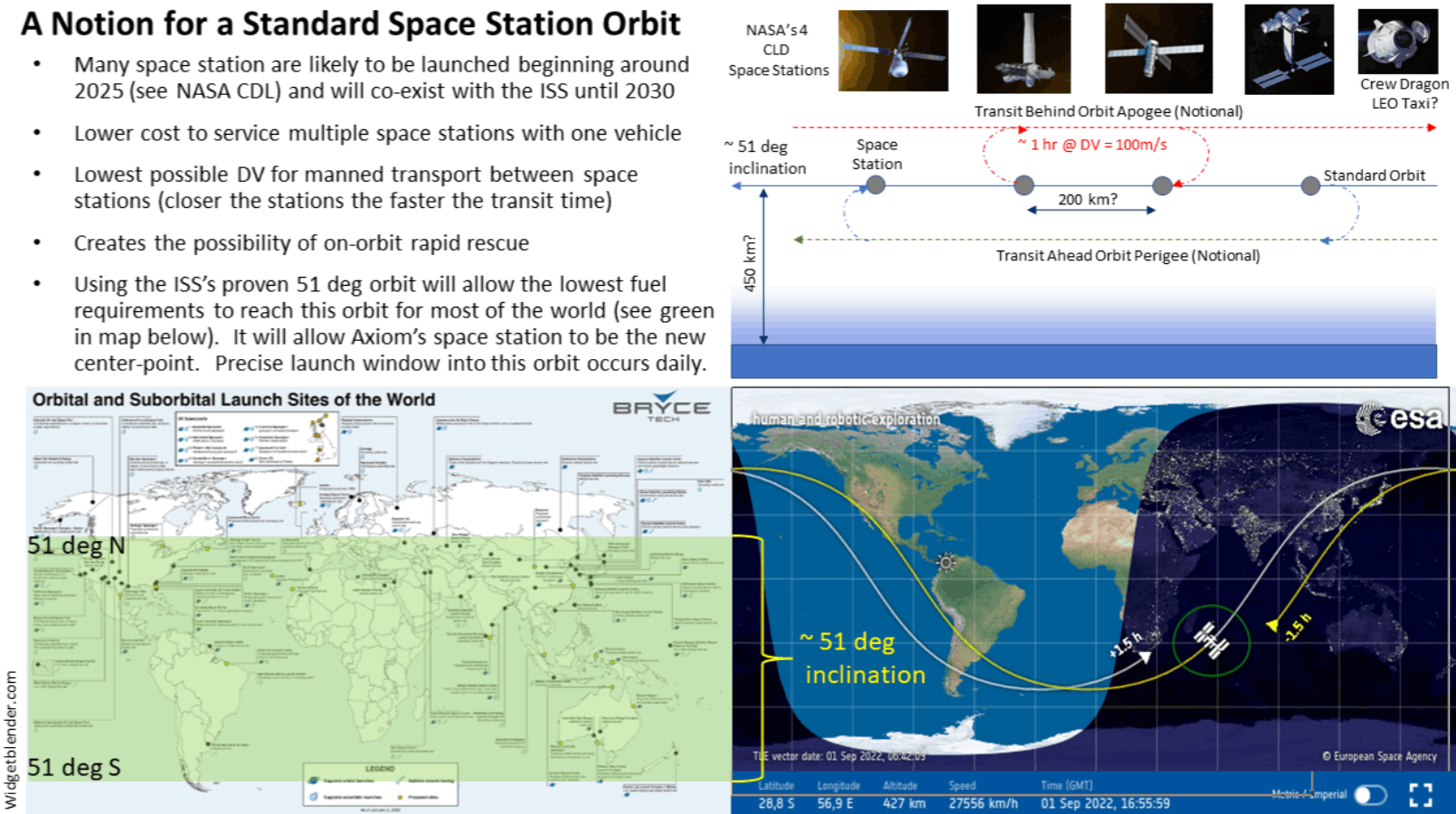
Orbital Arc - 2024 concept
A notion for a standard orbits with close spacing to enable travel between orbital space stations in the future.
- Many space stations are expected to be launched starting around 2025 and will co-exist with the ISS until 2030.
- There will be a lower cost to service multiple space stations with a single vehicle.
- The lowest possible delta-v (DV) is required for manned transport between space stations, which means closer stations result in faster transit times.
- This orbit creates the possibility of on-orbit rapid rescue.
- Using the ISS's proven 51-degree orbit will allow the lowest fuel requirements to reach this orbit from most of the world. This will make Axiom's space station the new center-point. Precise launch windows into this orbit occur daily.
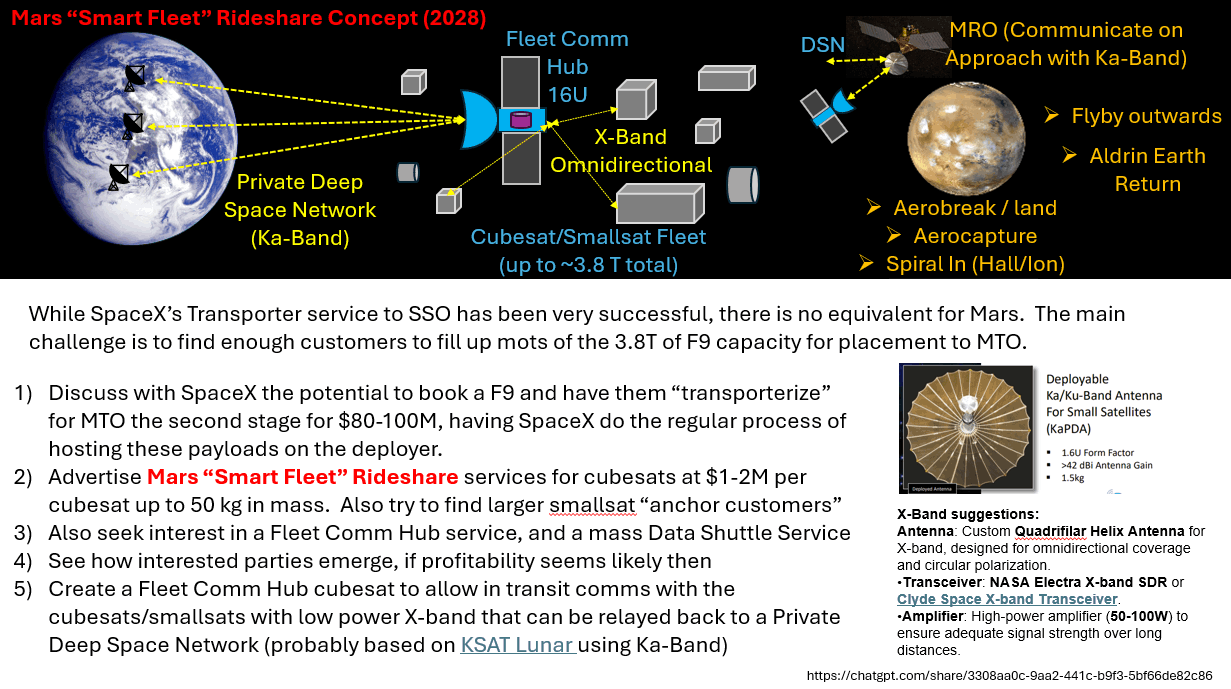
SpaceX Mars F9 based Rideshare - 2024 concept
While SpaceX’s Transporter service to SSO has been very successful, there is no equivalent for Mars. The main challenge is to find enough customers to fill up most of the 3.8T of F9 capacity for placement to MTO.
Note that SpaceX has proposed a Mars Rideshare concept.
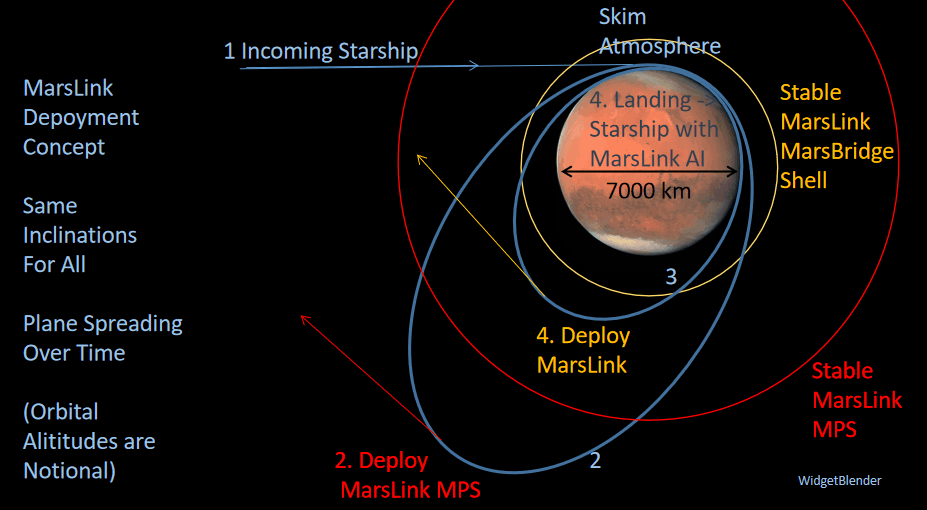
MarsLink based on Starlink - 2022 concept
Mars needs better communications. MarsLink is a radiation hardened vs of Starlink 1.5 with additional Mars Observations sensors but with radio crosslinks (laser is overkill given the limitations on sending into back to Earth. MarsLink MPS is a PNT system tuned for Mars. Finally MarsBridge is laser comms satellite based on the Psyche probe laser comm experiment (a big success so far).
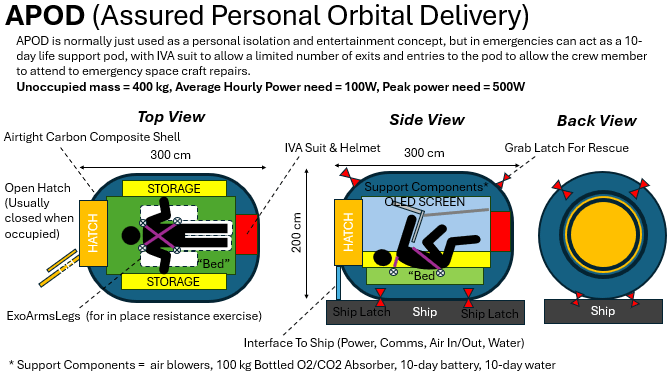
APOD (Assured Personal Orbital Delivery) - 2024 concept
One person, Self contained. Modes:
- Inside spacecraft only, just isolation or isolation + life support
- Removeable from spacecraft by robotics
- Eject-able from spacecraft
- Recoverable by another spacecraft
Just isolation:
- Sound, Light and Physical Isolation
- Communications (with other APODs, ship)
- Wrap around high resolution “environment” screen (no touch)
- Integrated keyboard, laptop, touch screen
- Oder absorption/Specific Oder Delivery (cut grass, pine forest?)*
- Entertainment (1000h + music, video, reading, writing, games) *
- Thermal Control (+/- 5 deg) *
- Air Flow Control (many small fans and air channels) *
- Resistance Exercise *
* VR integration
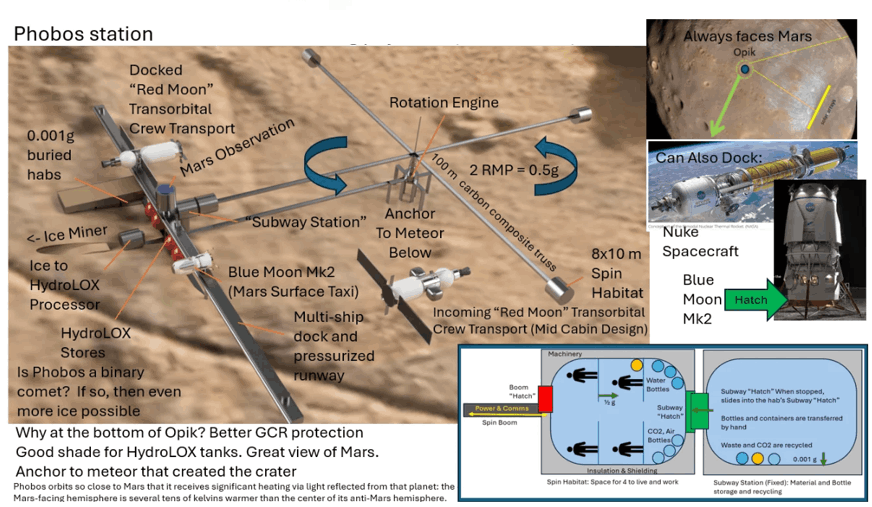
If Phobos is as water rich as we think it is, it can be hub for HydroLOX based propulsion for the solar system - 2024 concept
- It could act as “base camp” for the Mars surface missions (several NASA/ESA studies)
- Enables purely propulsive (DV = 5.5 km/s) landings-returns on Mars surface, eliminating the need for risky aerobraking
- It may be a binary comet = more ice content (20%-80%)
Water is fuel, atmosphere and … water … for propulsion around the solar system (just a DV = 1 km/s from Mars escape)
- No atmosphere + very low gravity = a large resource rich space station with built in radiation shielding
- If people are banned from Mars surface, then it a good real time robotic/rover teleoperation base
- Close orbit to Mars (closest moon in the solar system), tidally locked, Mars fills 30% of sky = facing side is warmer, thermally stable, has ~70% less CGR and micro-meteorite risk than interplanetary space, and less than Mars surface … add spin gravity facilities inside Opik crater and you have a nice environment for work for the 2 year crew rotation.
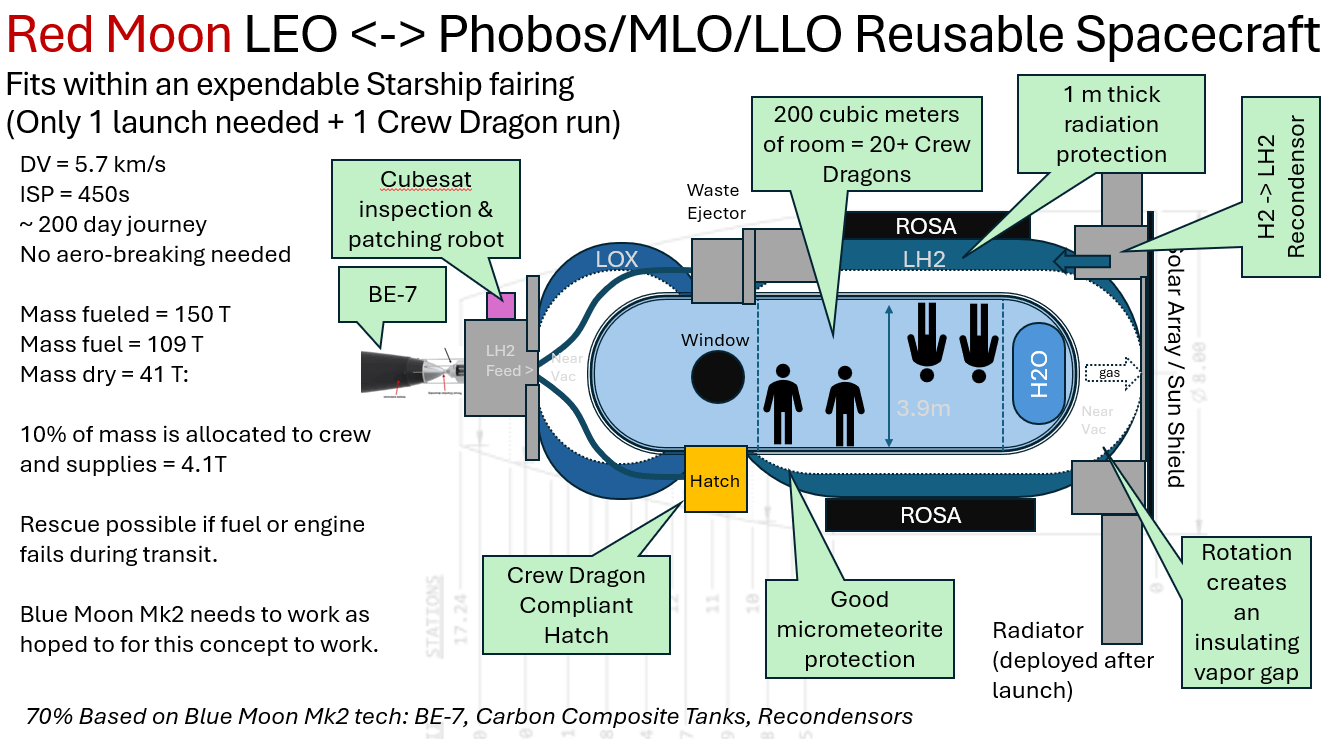
Red Moon - 2024 concept
A HyrdroLOX spacecraft based on Blue Moon Mk2. In order to minimize radiation, the crew travels to Phobos mostly inside the LH2 and LOX tanks. The crew of 4 spend mots of their time in APOD (Assured Personal Orbital Delivery) units. This is the key vehicle for our Phobos station concept. This diagram shows a minimally sized spacecraft that can fit into 1 Starship Cargo bay, but it expected that a expandable Starship upper stage may have a larger fairing and can deliver a spacecraft with more interior space to LEO. Crew Dragon or similar transportation takes the crew from Earth to LEO, and eventually back from LEO to Earth.
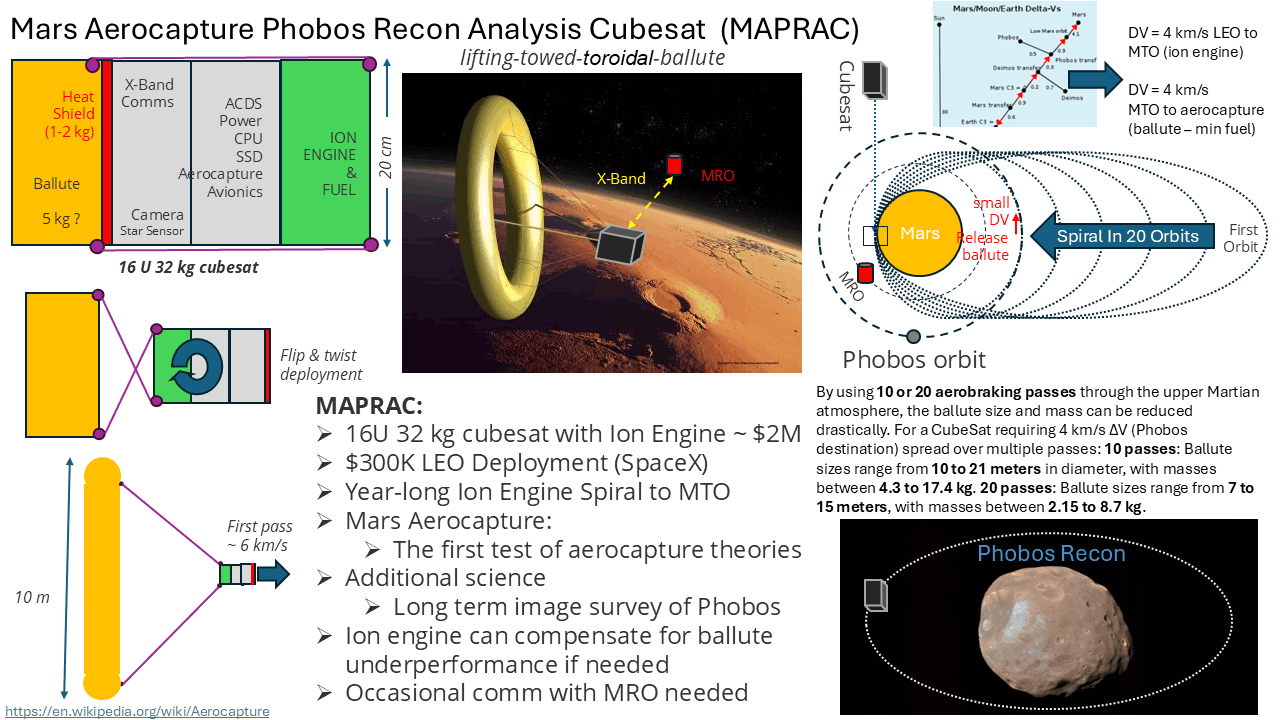
MAPRAC - 2023 concept
Mars Aerocapture Phobos Recon Analysis Cubesat (MAPRAC):
Considered for some time now, no mission has used aerocapture to enter Mars orbit, saving the fuel needed for a DV of 3 - 4 km/s. This cubesat attempts to validate it.
16U 32 kg cubesat with Ion Engine ~ $2M
$300K LEO Deployment (SpaceX)
Year-long Ion Engine Spiral to MTO
Mars Aerocapture: The first test of aerocapture theories
Additional science: Long term image survey of Phobos
Ion engine can compensate for ballute underperformance if needed
Occasional comm with MRO needed
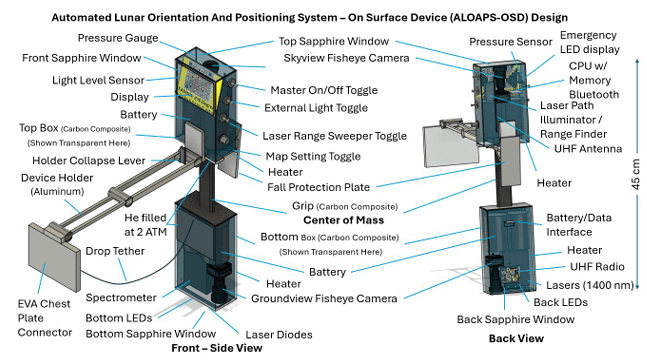
ALOAPS (Automated Lunar Orientation And Positioning System) - 2025 concept
ALOAPS centers on gathering a detailed image of the hemisphere above and in front of the user and then performs real time image adjustment (to compensate for tilt as measured by accelerometers).
The Sun and Earth positions combined with date information can also provide orientation information if they are visible.
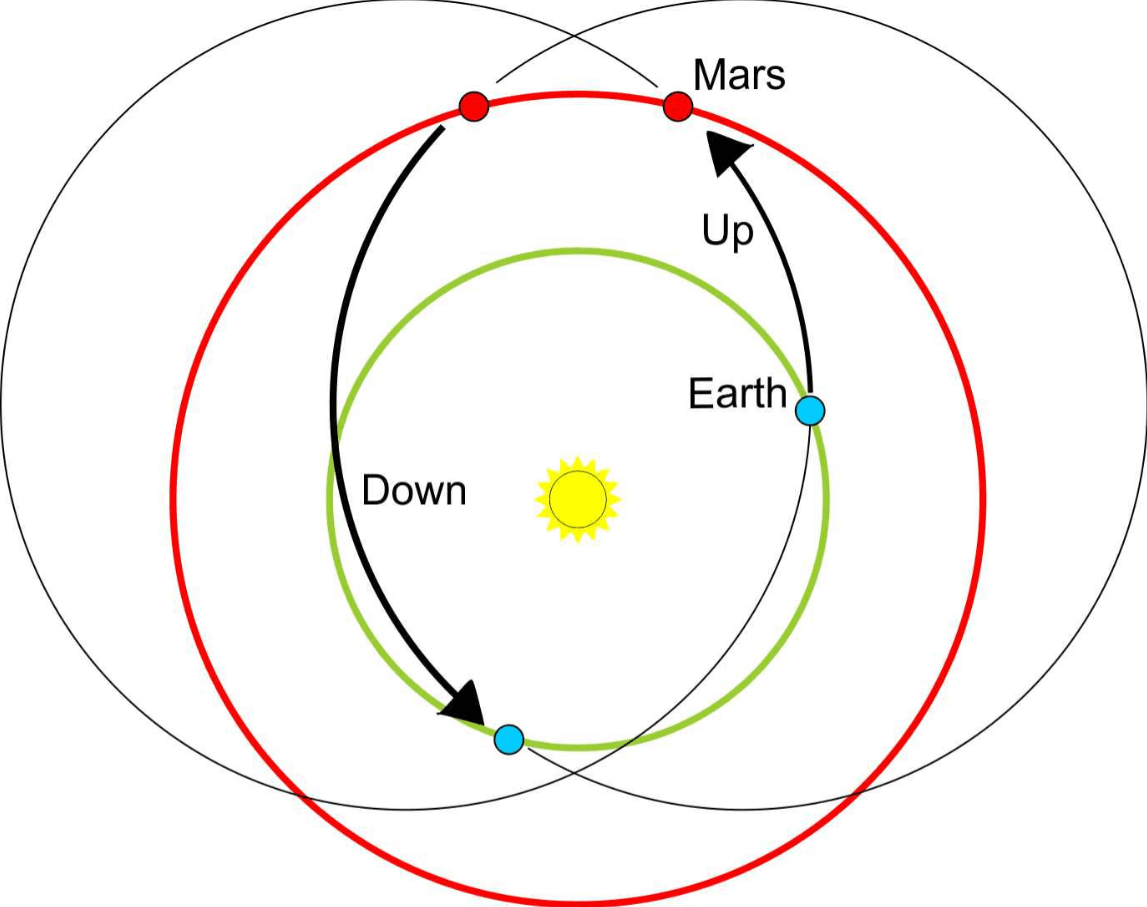
Create a tiny Aldrin cycler cubesat just to prototype the orbit - 2023 concept - 2024 proposal to TASA
UPDATE: Submitted a form of this to the Taiwan Space Union for consideration
Perhaps some 10 GB type data retrieval since bandwidth is very limited to Mars.
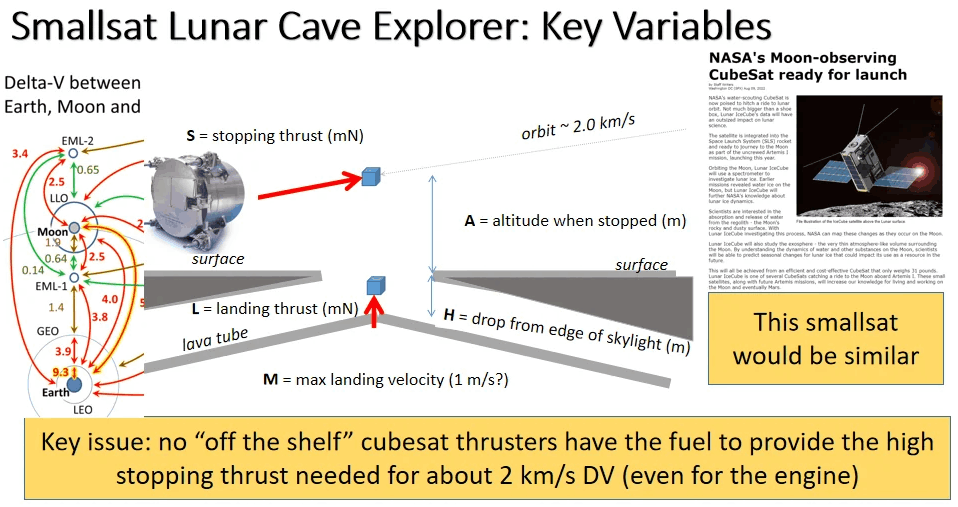
SLuCE - 2023 concept
Although I can find something in the 1 km/s range using Green Monopropellant (see Vacco) I don't see 2 km/s as a non-custom job for a single thruster. While the high ISP ion thrusters are there with 1000s+ ISPs to get you from LEO, LTI, GTO ... they apply a little thrust over very long time periods (days, weeks). But to hit the breaks about a landing target on the moon that won't work. So, the other option is to put 4 of these on a face and create a 4x2 or 4x3 cubesat, you have a lot of engine mass vs payload mass, but that is the cost of breaking hard from speeds many times that of a bullet. So this probably needs to be a pricy 12U cubesat. Bonus is that you have room for a lot of solar and sensors.
Note that the Japanese tried using a solid rocket for the stop DV above the skylight, but it failed.
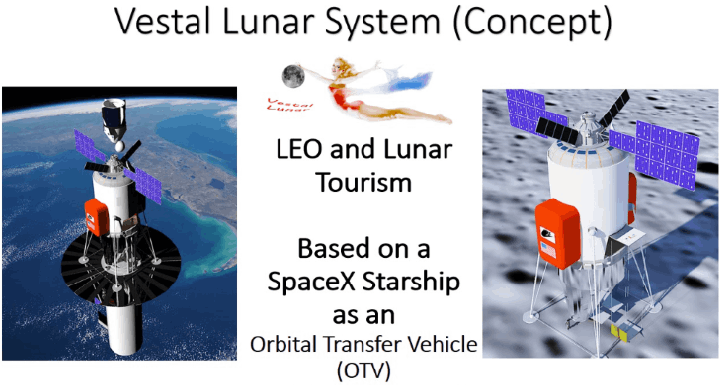
Vestal Lunar proposes modifying a Crew Starship to enable LEO -> Lunar Surface -> LEO round trips - 2022 concept
By using the Starship tanks and engines as an OTV to NRHO and just taking the lander down to the Lunar surface and back to NRHO, you can do round trips from LEO to the Lunar surface on one fill-up in LEO. They system is highly reusable. The presentation is based on a HeroX.com challenge we sponsored.
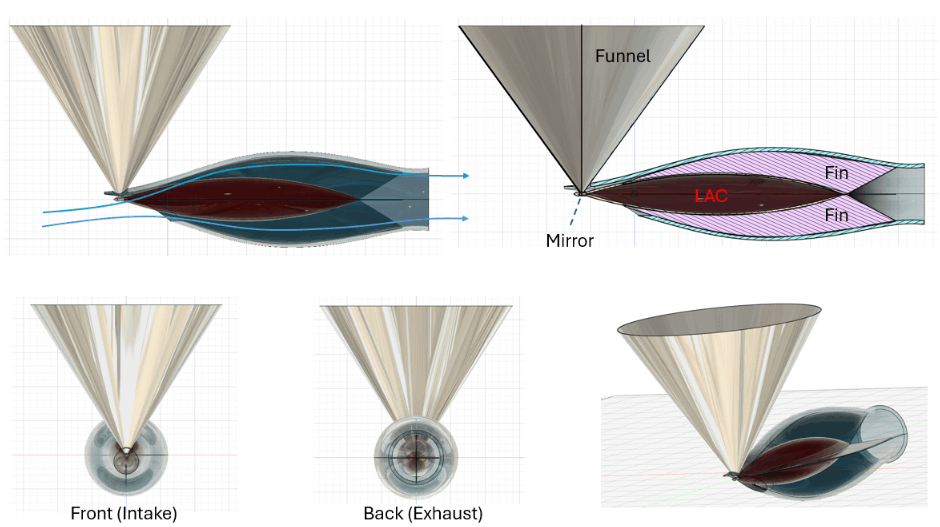
Laser Ramjet Engine - 2024 concept
A powerful space based laser can power an aircraft engine. This was part of our NASA First Place submission for NASA's Brilliant Minds for Pure Blue Skies Challenge.
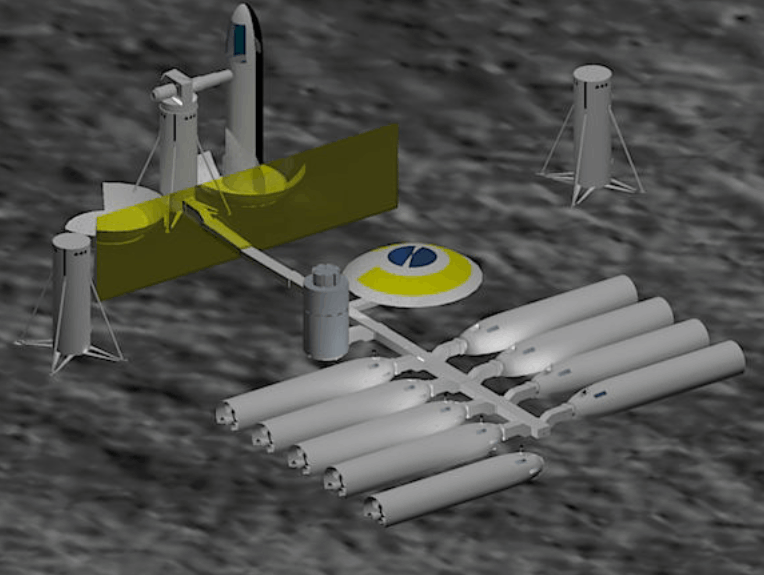
Shackleton Development Corporation (SDC) - 2022 concept
An notional exploration of how a large human colony at the Lunar South Pole might happen in the 2040s. SpaceX now seems to be moving toward to using horizonal Starships for this.
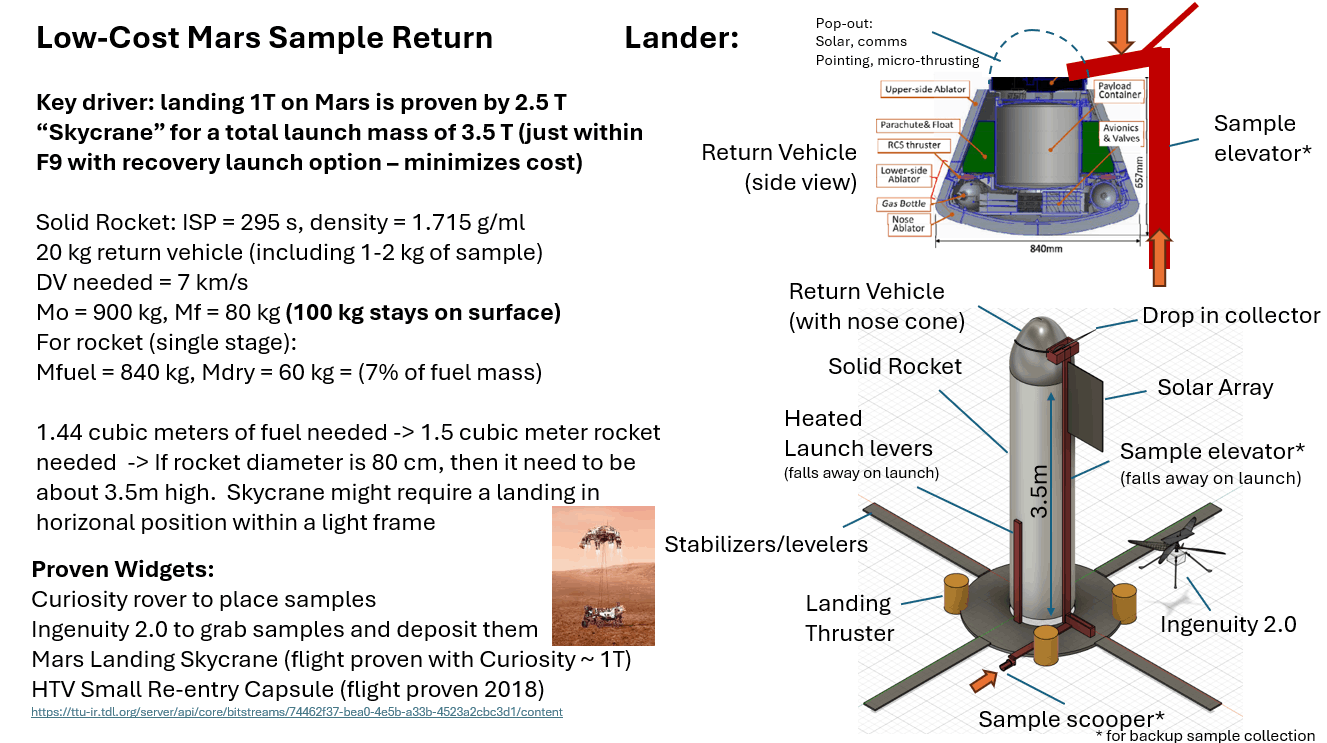
Low Cost Mars Sample Return mission - 2024 concept
Just saying there are existing components that could make this happen at a low cost.
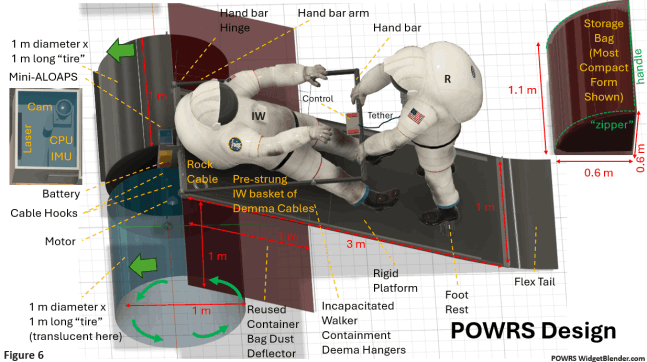
Powered Optimizing Wheeled Rescue System (POWRS) - 2025 concept
POWRS is a lightweight general mobility system for the Lunar Surface. It can move downed astronauts or 200 kg of cargo up to 3 km on a charge.
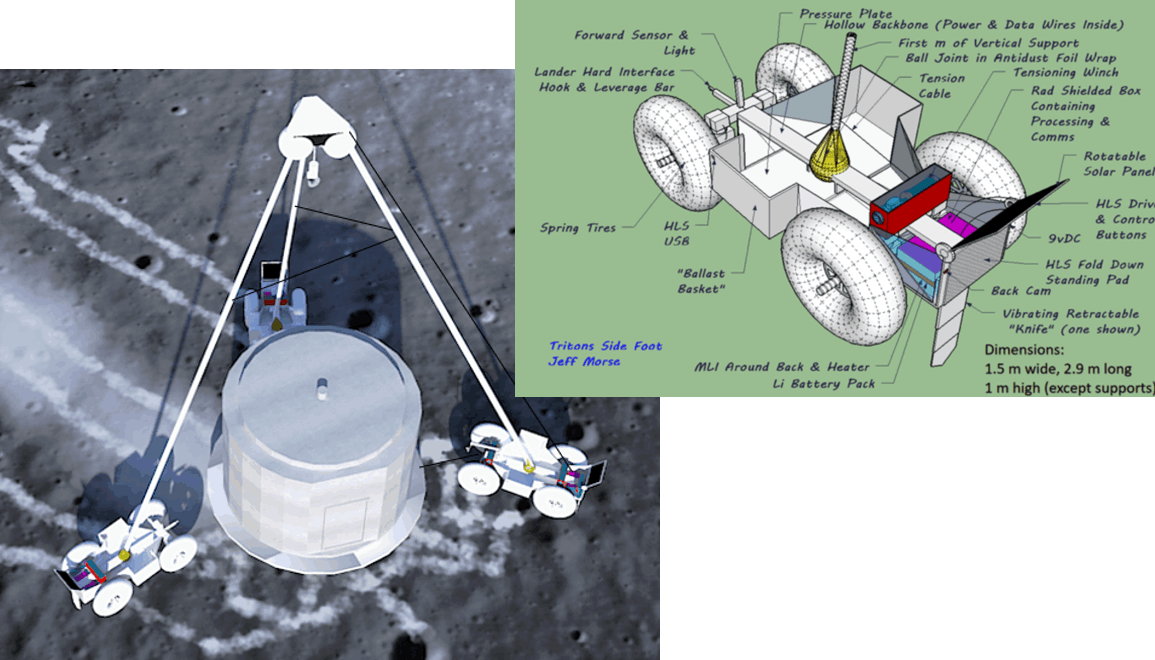
Tritons
Moving large objects on a lunar surface that often acts like sand dunes is a challenge. A moving tripod and sled assembly can move thes very heavy objects. Shown above is the lifting mode. There is also a sliding mode where the three feet attach to large rocks (when available) to give them leverage to pull the sled with cables.
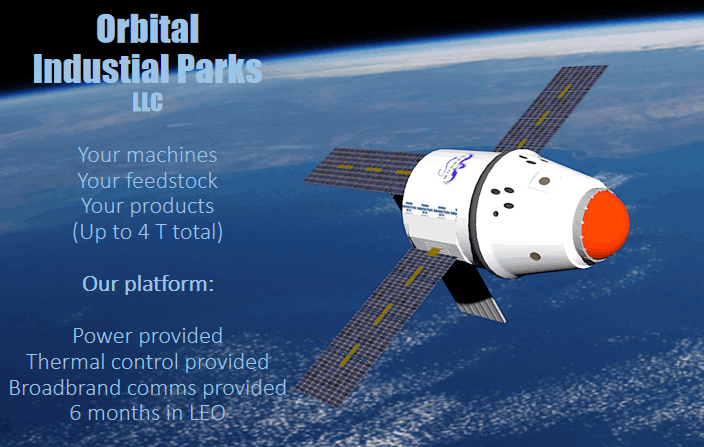
Orbital Industrial Parks
A notion from a few years ago. The idea is to put a factory inside a pressurized old Cargo Dragon and add some more solar array and radiator to the trunk. Allows for true zero-G. It seems like Varda is doing a scaled down version of this with pharma inputs.

L4AP
This concept is based on recent news of the second Earth Trojan being found. Some has speculated that there are thousands of objects in similar orbits here. The key is to find those that are in a very similar plane to Earth and closer to the center of L4 or L5 the better. More specifics:
NOTE: Later we found out that during its cruise phase, OSIRIS-REx was used to search for a class of near-Earth objects known as Earth-Trojan asteroids as it passed through Sun–Earth L4 Lagrange point. Between 9–20 February 2017, the OSIRIS-REx team used the spacecraft's MapCam camera to search for the objects, taking about 135 survey images each day for processing by scientists at the University of Arizona. The search was beneficial even though no new trojans were found. So this notion is probably OBE.

No Mars ISTU Fuel Production Starship-based Mars Mission
Mars ISTU fuel production is unproven, vs MethLOX on Earth. So ... add a depot Starship to the mission and bring all you need with you. You can also use this as the counter-mass for a tethered artificial 1/3g gravity set-up. The Mars Crew Starship is pretty much as planned, as is the Fuel Depot Starship, but you need to add a reusable mini-Starship lander which is up and down fueled by the depot (which is expended at Mars). As a bonus you get a Venus flyby, and you have the option of staying at Mars for only a month or so before a return to Earth. The Crew Starship stays in Mars Orbit eliminating the risk and stress of landing such a large ship. It is expected this one month window would be use for crew rotations at a pre-built base.
